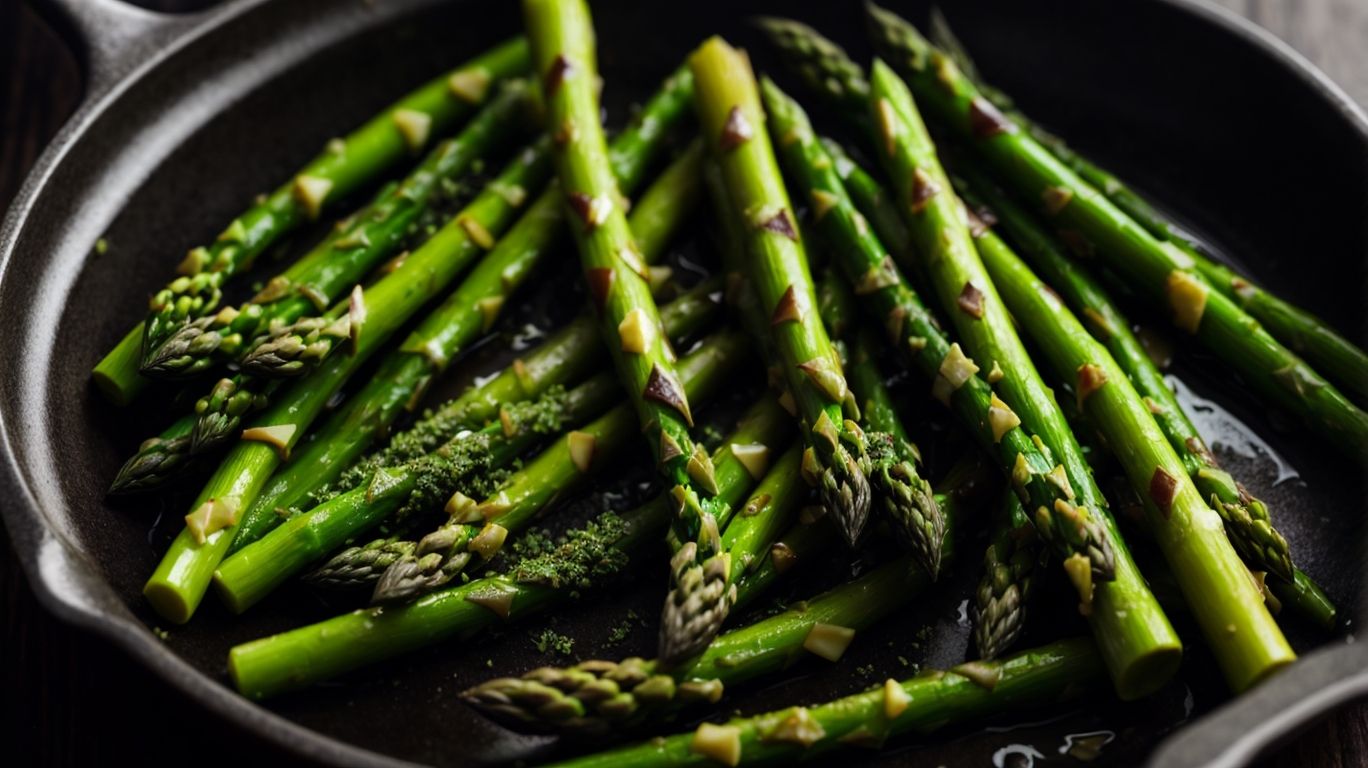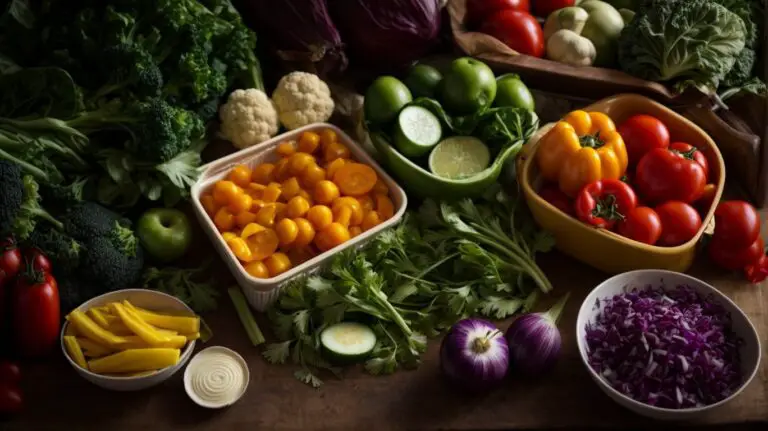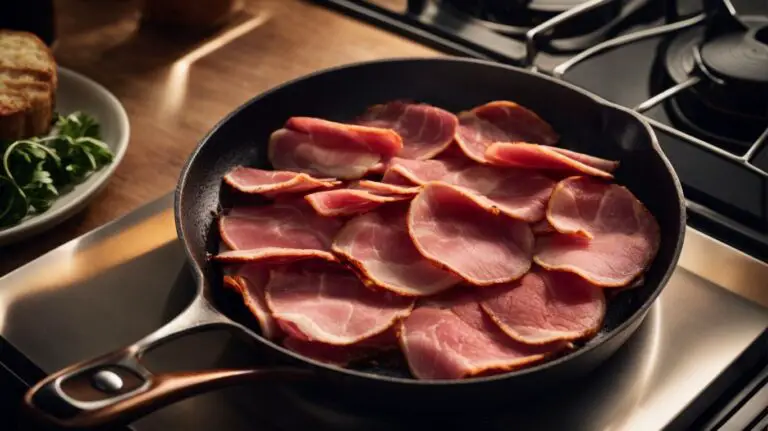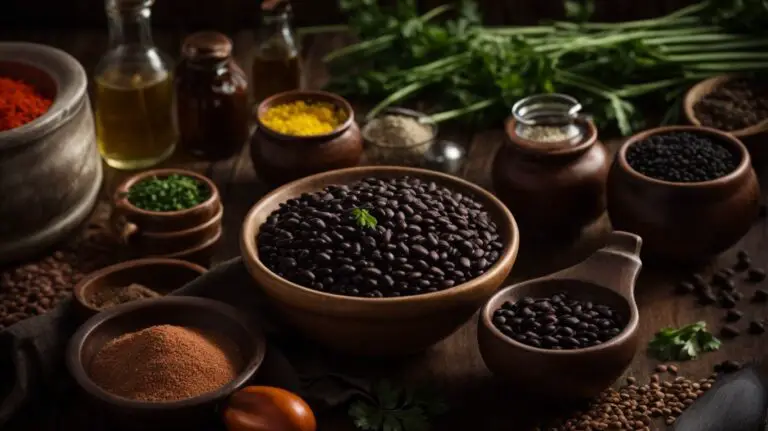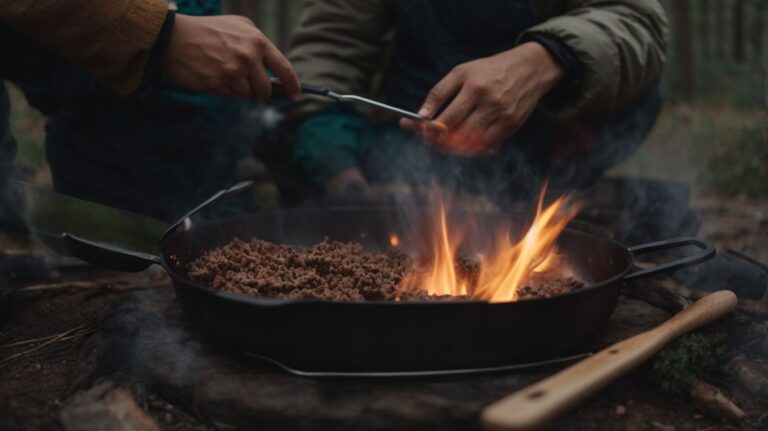How to Cook Asparagus After Blanching?
Are you looking to elevate your asparagus game in the kitchen?
We explore the process of blanching asparagus and why it’s a crucial step in preparing this versatile vegetable.
From grilling to roasting, sautéing to baking, we delve into different cooking methods to bring out the best flavors in asparagus.
Get ready for expert tips on how to make your asparagus dishes shine after blanching!
Key Takeaways:
What is Blanching?
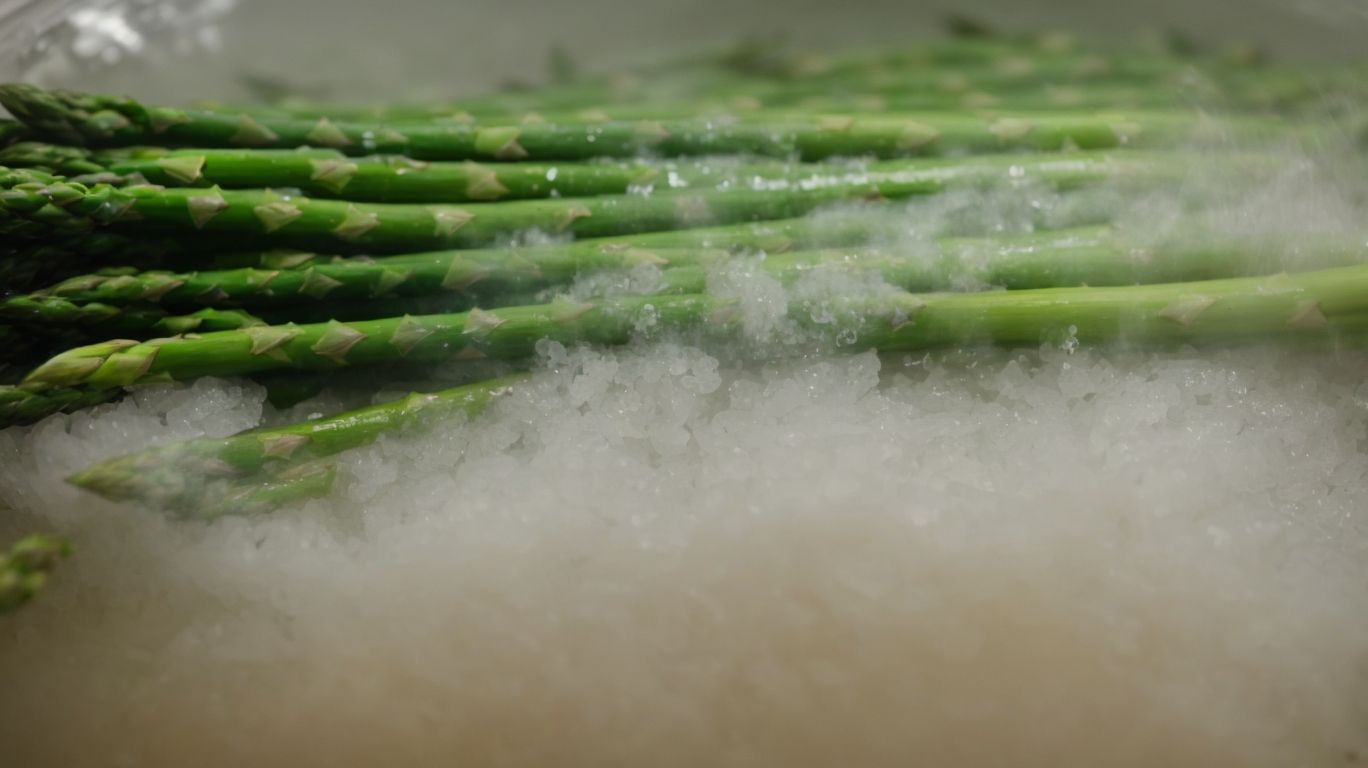
Credits: Poormet.Com – Jose Ramirez
Blanching is a cooking technique that involves briefly immersing food in boiling water, then rapidly cooling it in an ice bath.
Blanching is commonly used in cooking to partially cook food, particularly vegetables, before further preparation. This process helps to soften the outer texture of the food item, making it easier to peel, slice, or incorporate into dishes.
Asparagus, for example, benefits greatly from blanching as it retains its vibrant green color and crisp texture while reducing its natural bitterness. The quick cooking method also helps to lock in nutrients and prevents overcooking, ensuring the vegetables maintain their desired firmness and flavors.
Why Should You Blanch Asparagus?
Blanching asparagus helps to preserve its vibrant green color, retain nutrients, and achieve a perfect balance of texture and flavor.
Blanching asparagus plays a crucial role in enhancing its nutritional content. By quickly immersing the asparagus in boiling water for a short period and then immediately cooling it down in ice water, this method effectively locks in essential vitamins and minerals, making them more readily available for absorption. This process also helps in softening the tough outer layer of asparagus, resulting in a more pleasant eating experience. In addition, blanching contributes to the overall taste profile of asparagus by reducing any bitterness and bringing out its natural sweetness.
How to Blanch Asparagus?
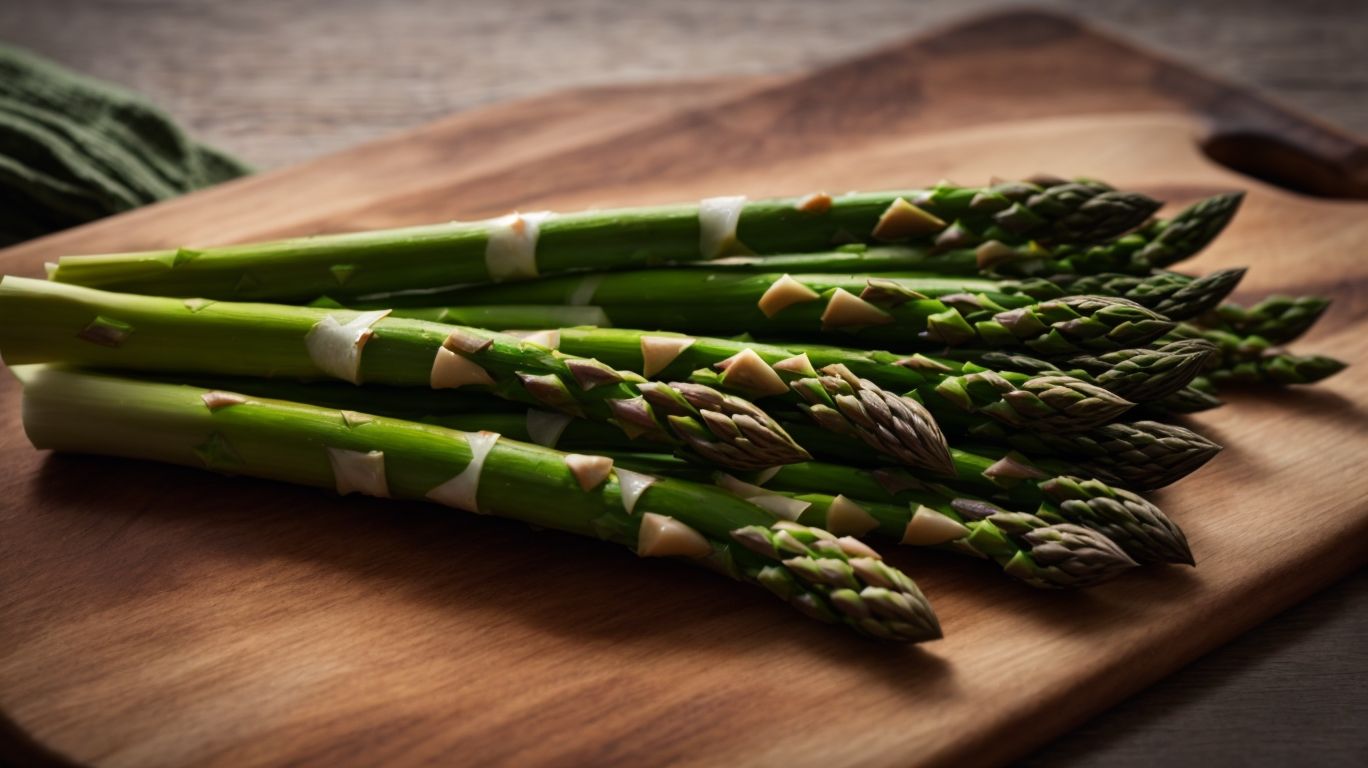
Credits: Poormet.Com – Samuel Roberts
To blanch asparagus, start by boiling a pot of water, then submerge the asparagus stalks for a brief period before transferring them to an ice bath.
Blanching asparagus involves a careful process of cooking the vegetable partially before using it in various dishes.Water temperature plays a crucial role, as you want to have a pot of well-salted boiling water at the ready.Blanching time is relatively short, typically ranging from 1 to 3 minutes depending on the thickness of the asparagus spears.
Once the asparagus turns a vivid green and slightly tender, it’s time to remove them quickly and shock them in an ice bath to halt the cooking process.Olive oil can be a great addition to the blanching water, adding a subtle flavor to the asparagus while keeping them moist.
How to Cook Asparagus After Blanching?
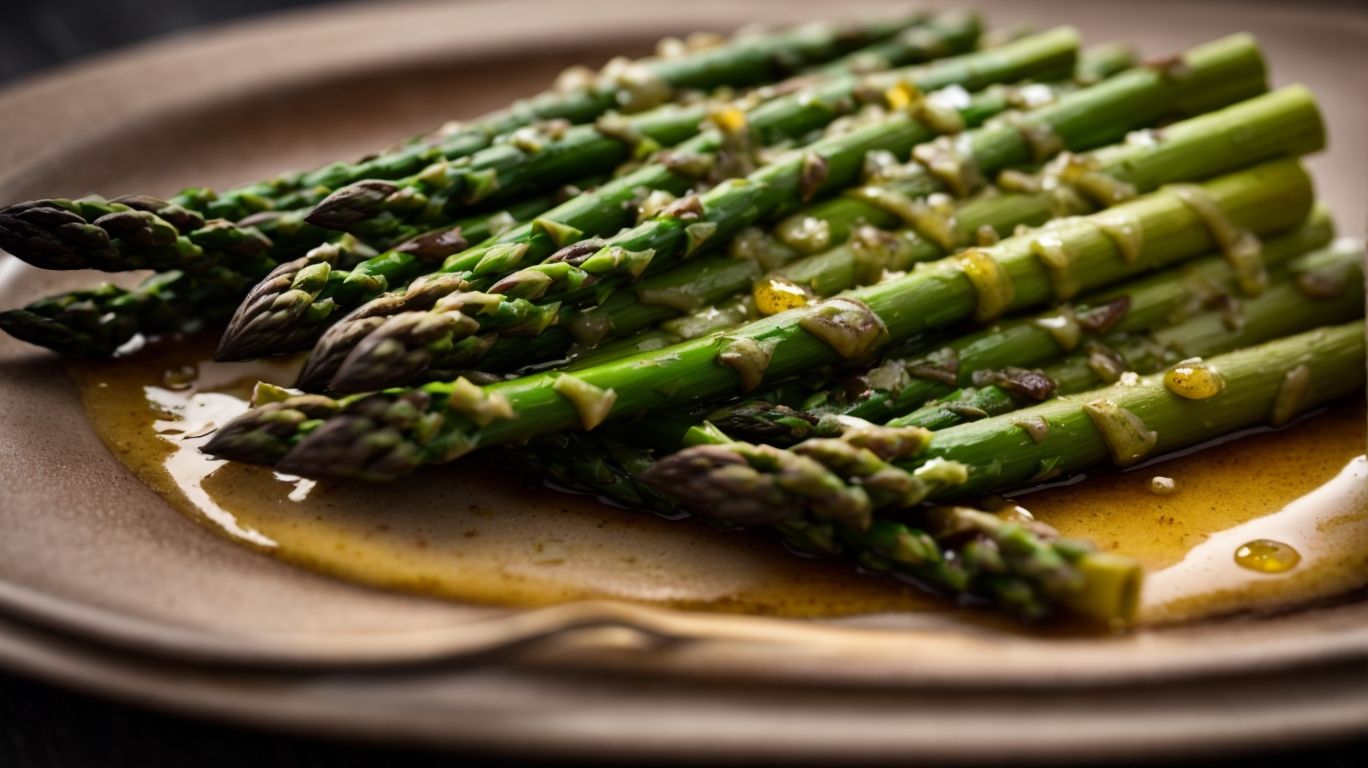
Credits: Poormet.Com – Eugene Perez
After blanching asparagus, consider preparing it with a zesty Mediterranean-style salsa featuring fresh lemon, garlic, and olive oil.
Once you’ve blanched the asparagus to the perfect tenderness, drizzle it with a mixture of minced garlic, zesty lemon juice, and a generous splash of extra virgin olive oil. Place the seasoned asparagus on a baking sheet and roast it in a preheated oven until it begins to caramelize and develop those irresistible charred edges.
To enhance the flavors even further, consider adding a sprinkle of grated Parmesan cheese or a handful of toasted pine nuts during the last few minutes of roasting. This will create a delightful contrast of creamy, nutty, and tangy notes that complement the tender asparagus beautifully.
Grilling Asparagus
Grilling asparagus imparts a delightful smoky flavor and creates appealing grill marks on the stalks, enhancing both taste and visual presentation.
When preparing to grill asparagus, start by washing the stalks thoroughly and trimming off the tough ends. Drizzle them with a light coating of olive oil and sprinkle with salt and pepper for basic seasoning. For an added depth of flavor, consider adding garlic powder, lemon zest, or a dash of balsamic vinegar. Preheat your grill to a medium-high heat, around 400-450°F, and place the asparagus diagonally across the grates to achieve those coveted grill marks. Rotate them halfway through cooking for even charring. Grilling time typically ranges from 5-10 minutes, depending on the thickness of the stalks, ensuring they are tender but still slightly crisp. The result? Tender-crisp asparagus with a smoky flavor and beautiful grill marks, ready to elevate any dish with both savory taste and visual appeal.
Roasting Asparagus
Roasting asparagus in the oven results in crispy edges and tender stalks, especially when topped with grated Parmesan cheese for added flavor.
Preheat your oven to 425°F (218°C) and line a baking sheet with parchment paper for easy cleanup. Wash the asparagus, trim off the woody ends, and pat dry with a kitchen towel.
Place the asparagus spears on the baking sheet in a single layer, drizzle with olive oil, then season with salt, pepper, and your favorite herbs like garlic powder or thyme.
Roast in the preheated oven for 12-15 minutes, or until the asparagus is tender and the edges start to turn golden brown. Sprinkle generously with grated Parmesan cheese during the last few minutes of roasting to allow it to melt and create a savory crust.
Once done, transfer the roasted asparagus to a serving platter and enjoy as a delightful side dish or a healthy snack that’s bursting with flavor and texture.
Sautéing Asparagus
Sautéing asparagus in a skillet with garlic and a splash of fresh lemon juice creates a vibrant and aromatic dish that complements various main courses.
When preparing this dish, ensure your skillet is preheated to a medium-high heat to achieve that perfect sear on the asparagus spears. To start, heat a drizzle of olive oil in the skillet, then add minced garlic for a fragrant base. Next, carefully add the asparagus spears, spreading them out evenly to allow for even cooking.
As the asparagus starts to cook, squeeze a generous amount of lemon juice over the top to add a zesty brightness to the dish. The lemon juice not only enhances the flavors of the asparagus but also brings a refreshing twist to the overall taste.
Stir-Frying Asparagus
Stir-frying asparagus in a hot wok with soy sauce and fresh ginger results in a quick and flavorful dish that pairs well with rice or noodles.
For an authentic stir-fry experience, it is essential to heat the wok properly before adding the ingredients, ensuring that the asparagus retains its crunchiness and vibrant color. The high heat allows for a quick cooking process, preserving the natural flavors of the asparagus while infusing them with the umami taste of soy sauce and the subtle heat of ginger.
To achieve the perfect stir-fry texture, make sure not to overcrowd the wok, which can lead to steaming rather than stir-frying. Keep the ingredients moving constantly with a quick wrist action, allowing them to cook evenly and develop that coveted caramelized exterior.
Boiling Asparagus
Boiling asparagus until tender in salted water helps to preserve its vitamins C and K while ensuring a soft yet nutrient-rich side dish.
To achieve the perfect tenderness when boiling asparagus, it’s crucial to carefully monitor the cooking time. Overcooking can lead to a mushy texture, so it’s recommended to cook for around 3-5 minutes, depending on the thickness of the spears. Remember, a slight crispness is ideal for that delightful crunch. Asparagus is packed with essential nutrients like folate and fiber. Boiling in salted water not only enhances its natural flavor but also helps to retain these valuable nutrients.
Steaming Asparagus
Steaming asparagus in a steamer basket preserves its natural crunch and vibrant color, perfect for a simple side dish topped with crumbled feta cheese.
When steaming asparagus, start by trimming the woody ends of the spears and rinsing them thoroughly. Place about an inch of water in the pot, ensuring it doesn’t touch the bottom of the steamer basket. Once the water begins to simmer, add in the asparagus and cover the pot with a tight lid. Steam for approximately 3-5 minutes, depending on the thickness of the asparagus, to achieve that desired al dente texture. The steamer basket allows for gentle cooking, retaining the crunch and vibrant color of the asparagus without overcooking.
Baking Asparagus
Baking asparagus on a sheet pan with a drizzle of balsamic glaze and cherry tomatoes creates a flavorful and visually appealing dish suitable for any occasion.
Preheat your oven to 400°F to ensure the asparagus roasts evenly. Place the washed and trimmed asparagus spears on the sheet pan in a single layer. Drizzle the balsamic glaze over the asparagus, giving each spear a perfect coating.
Halve some vibrant cherry tomatoes and scatter them around the asparagus for added color and a burst of sweet juiciness. The tomatoes will caramelize slightly in the oven, infusing the dish with a delightful brightness.
Roast the veggies for about 15-20 minutes until the asparagus is tender but still retains a slight crunch. The balsamic glaze will have caramelized, intensifying its flavors.
Tips for Cooking Asparagus After Blanching
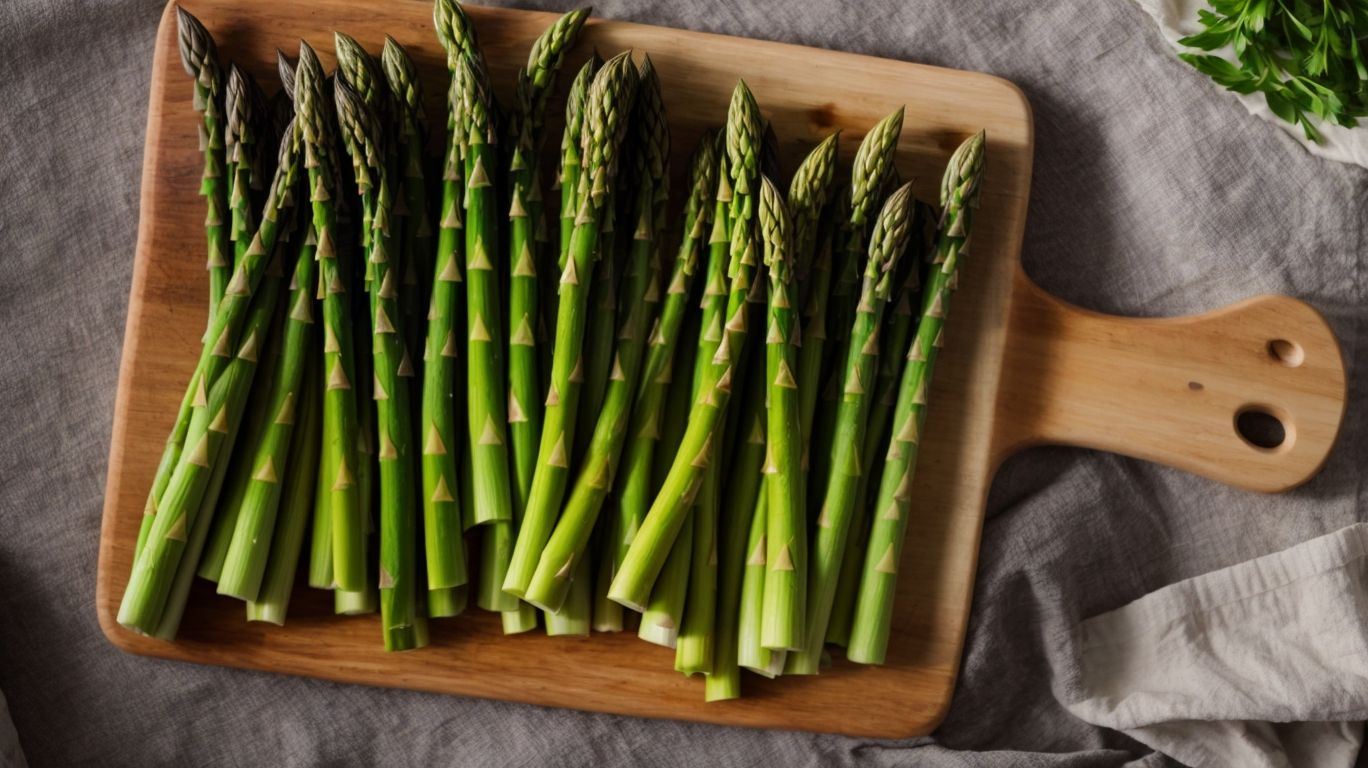
Credits: Poormet.Com – Jeremy Williams
After blanching asparagus, follow these tips for cooking to ensure optimal flavor and texture, including using high heat and experimenting with different seasonings.
Once the asparagus is blanched to perfection, it’s time to elevate its taste profile. Sautéing blanched asparagus in a skillet with a drizzle of olive oil can add a delightful caramelized flavor. For a quicker option, try roasting the asparagus in the oven at a high temperature for a crispy texture.
Regarding seasoning, the options are limitless. Consider adding a sprinkle of lemon zest for a zesty kick, or a pinch of garlic powder for a savory twist. Fresh herbs like thyme or rosemary can also impart a fragrant note to the dish.
Add Flavorful Seasonings
Enhance the taste of asparagus by incorporating a variety of flavorful seasonings such as aromatic herbs, spices, or a classic cacio e pepe blend.
When considering seasoning options for asparagus, herbs like fresh parsley or dill can add a burst of freshness, while spices such as garlic powder or smoked paprika can introduce depth and warmth to the dish. Experimenting with unique blends like truffle salt or lemon pepper can provide a sophisticated twist to the traditional flavors of asparagus.
By carefully selecting and pairing seasonings, you can elevate the natural flavors of asparagus, creating a delightful symphony of tastes that engage the palate. These additions not only enhance the overall culinary experience but also showcase the versatility of this beloved vegetable in various dishes.
Use High Heat
Utilize high heat when cooking asparagus to achieve a quick sear and caramelization, enhancing the vegetable’s natural sweetness, ideal for pairing with lamb chops.
High-temperature cooking not only intensifies the asparagus’s flavor but also creates a delightful contrast in textures – crisp on the outside and tender on the inside. This method locks in the vibrant color and nutrients, making it both visually appealing and nutritious.
When paired with succulent lamb chops, the charred notes from searing the asparagus complement the savory richness of the meat perfectly. The high-heat process enhances the asparagus’s earthy undertones, adding depth to the overall dish.
Don’t Overcook
Avoid overcooking asparagus to preserve its crisp texture and vibrant color, aiming for an al dente consistency that pairs beautifully with delicate dishes like salmon.
When cooking asparagus, remember that it should be tender yet still have a slight crunch, signifying the perfect al dente stage. Overcooking can result in mushy, unappealing spears that lose their flavor and nutrients.
To achieve the ideal texture, blanching or roasting the asparagus for a short period is recommended. Cooking times may vary depending on the thickness of the spears, so keep a close eye on them.
Pairing asparagus with seafood like salmon offers a delightful combination of flavors. The earthy taste of asparagus complements the rich, buttery profile of salmon perfectly, creating a harmonious dish that is both healthy and delicious.
Try Different Cooking Methods
Experiment with various cooking methods for asparagus to explore its culinary versatility, from salads to store additional batches for later use.
Asparagus can be enjoyed in a multitude of ways, whether it’s grilled to bring out its smoky flavor, roasted with a drizzle of olive oil and seasonings, or sautéed in a pan with garlic for a burst of aromatic goodness. Incorporating blanched asparagus into salads can add a refreshing crunch and vibrant color to your dish, creating a delightful contrast in textures. After blanching a batch, you can store it in an airtight container in the refrigerator, allowing for quick and convenient use in various recipes without compromising on freshness.
Conclusion

Credits: Poormet.Com – Kenneth Lewis
Mastering the art of blanching and cooking asparagus unlocks a world of simple yet delicious culinary possibilities, such as pairing the vegetable with a refreshing Mediterranean-style salsa.
Blanched asparagus serves as the perfect canvas to absorb the vibrant flavors of the Mediterranean-style salsa, adding a burst of freshness and tanginess to each bite. The process of blanching not only retains the vibrant green color of asparagus but also preserves its crunchiness, offering a delightful texture that complements the salsa beautifully.
Frequently Asked Questions
1. How to Cook Asparagus After Blanching?
After blanching asparagus, you can finish cooking it by grilling, roasting, or sautéing to add flavor and texture.
2. Can I boil asparagus after blanching?
Yes, you can boil blanched asparagus for a few minutes to further cook it, but be careful not to overcook it as it can become mushy.
3. What is the best way to cook asparagus after blanching?
Grilling or roasting asparagus after blanching brings out its natural sweetness and adds a delicious charred flavor.
4. How long should I cook asparagus after blanching?
This depends on the cooking method, but on average, asparagus should be cooked for an additional 5-10 minutes after blanching for optimal tenderness.
5. Can I season asparagus after blanching?
Yes, you can season blanched asparagus with herbs, spices, or a drizzle of olive oil before cooking to enhance its flavor.
6. What are some creative ways to use cooked asparagus?
You can use cooked asparagus in salads, quiches, stir-fries, or even as a topping for pizza. It’s a versatile ingredient that can add a nutritious boost to many dishes.

